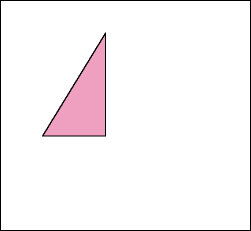|
| Pythagorean Theorem |
|
 The famous Pythagorean Theorem, due to the Greek geometer and
mathematician Pythagoras (born on the Greek island of Samos circa 580 B.C.E.), asserts
that a remarkable and, at the same time, simple relationship exists between the squares of
the sides of a right plane triangle. Namely, that the sum of the squares of the two sides
adjacent to the right angle is always exactly equal to the square of the side opposite the
right angle, the hypotenuse.
The famous Pythagorean Theorem, due to the Greek geometer and
mathematician Pythagoras (born on the Greek island of Samos circa 580 B.C.E.), asserts
that a remarkable and, at the same time, simple relationship exists between the squares of
the sides of a right plane triangle. Namely, that the sum of the squares of the two sides
adjacent to the right angle is always exactly equal to the square of the side opposite the
right angle, the hypotenuse.
Can you see the proof of this theorem in the animation?
Some hints — Bear in mind that the area of a square is equal to its height times its width, which, because the height and width are identical, is just the "square" of any side. Also, focus on the constancy of the total area of the figure, once all four triangles and the small blue square are in place. Finally, think carefully about what determines the widths of the two square areas separated by the vertical green line at the end of the animation (which repeats after a short pause).
If the hints aren't sufficient, don't despair! The animation on the
next page is designed to remove any, and all, mystery.

|
Davis Associates, Inc. • 43 Holden Road •
Newton, MA 02465 U.S.A. • 617-244-1450 • 617-964-4917 (Fax) Unsolicited advertisements not accepted at this Fax number and will be reported to the FCC. |